Estimated reading time 9 minutes, 26 seconds.
Five hours of empty Atlantic pass with no one else to be heard on the radio. Without exception we get any altitude and speed we want; we’re the only ones out here anyway. Isolated between the deep blue ocean and the deeper depths of outer space.
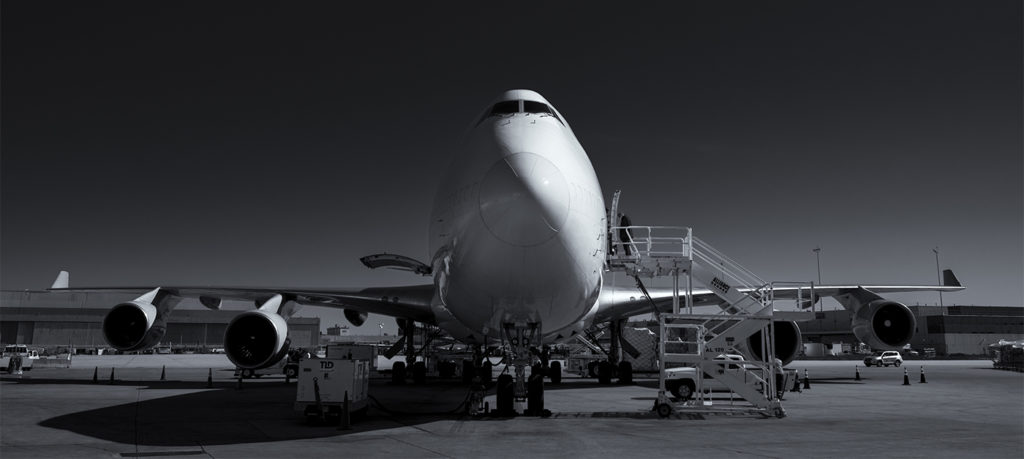
Villages, towns and rivers pass by while we slowly drift closer towards one of the busiest cities in the world: New York City. I close the thrust levers to initiate our descent and soon we’re gliding down along the pre-programmed arrival path.
Passing 12,000 feet (3,660 meters) with a stunning view over Manhattan and Central Park from my right-hand window, I gaze at the familiar city I’ve come to know so well. Hard to imagine this metropolis is in a state of emergency and total lockdown when looking at it from up here. A handful of ferries are still running their schedules, but the streets are mostly empty. Nothing abnormal to be seen from this high up, though I know my elevated perspective can be misleading.
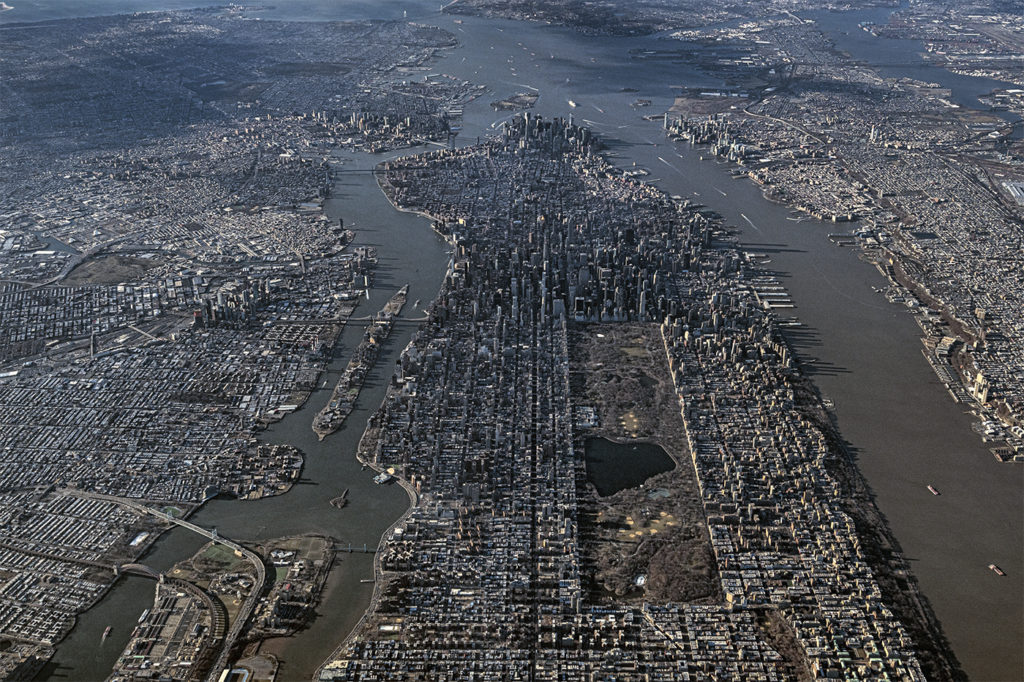
What strikes me more is the fact that we’re the only ones up here right now. One of the busiest, and at times most chaotic, airspaces is all mine today. Minutes later, we’re cleared to land and allowed to find our own way to the parking position.
I remember the first time I flew here with a Boeing 747 nearly a decade ago: traffic all over the place, strict arrival procedures, fast-speaking controllers that bombarded me with complicated instructions in unfamiliar slang. Not to speak of the tight sequencing among other traffic, short runway and heavy crosswind, only to then find myself in an organized chaos on the ground. Quite an experience back then and such a difference with the airport I see today.
John F. Kennedy International Airport never felt so weirdly quiet.
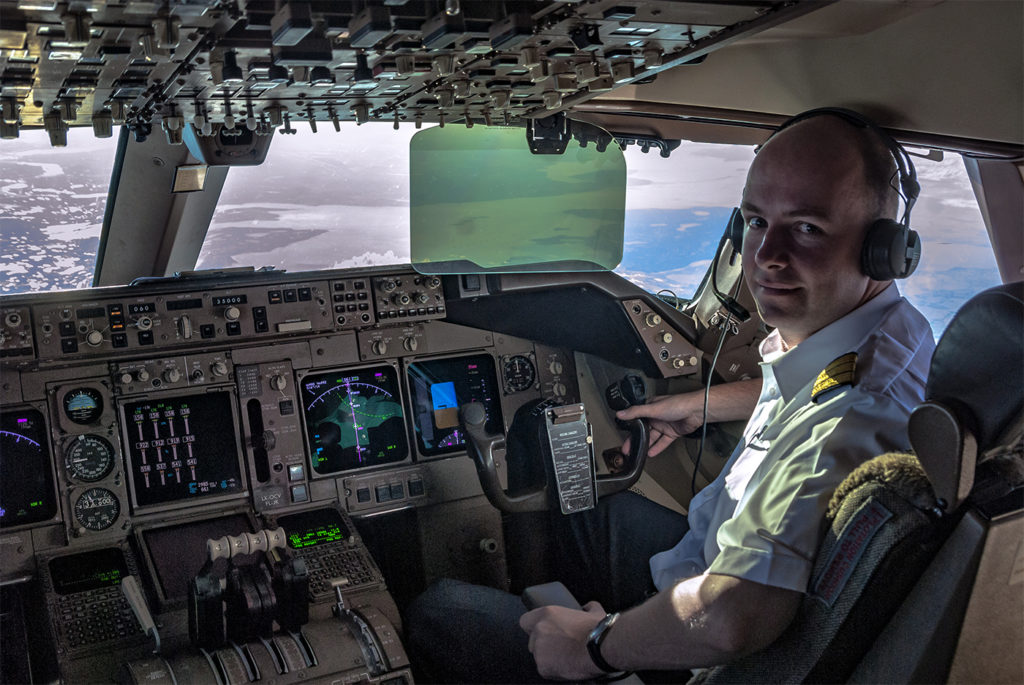
Parking brake set, paperwork finished and checklists completed. So far the old routine.
I put on my face mask and protective gloves before I have my temperature measured by the immigration officer. Have I been coughing in the last few hours? Did I notice a rise of temperature or running nose? Have I been in China or Iran in the last week? More administrative paperwork is filled out and with a clean bill of health I’m cleared to leave the cockpit in protective gear.
Our taxi is waiting for us outside the cargo terminal, our driver protected by a face mask and large Plexiglas sheet. I’m still wondering if this is supposed to protect him from us or the other way around.
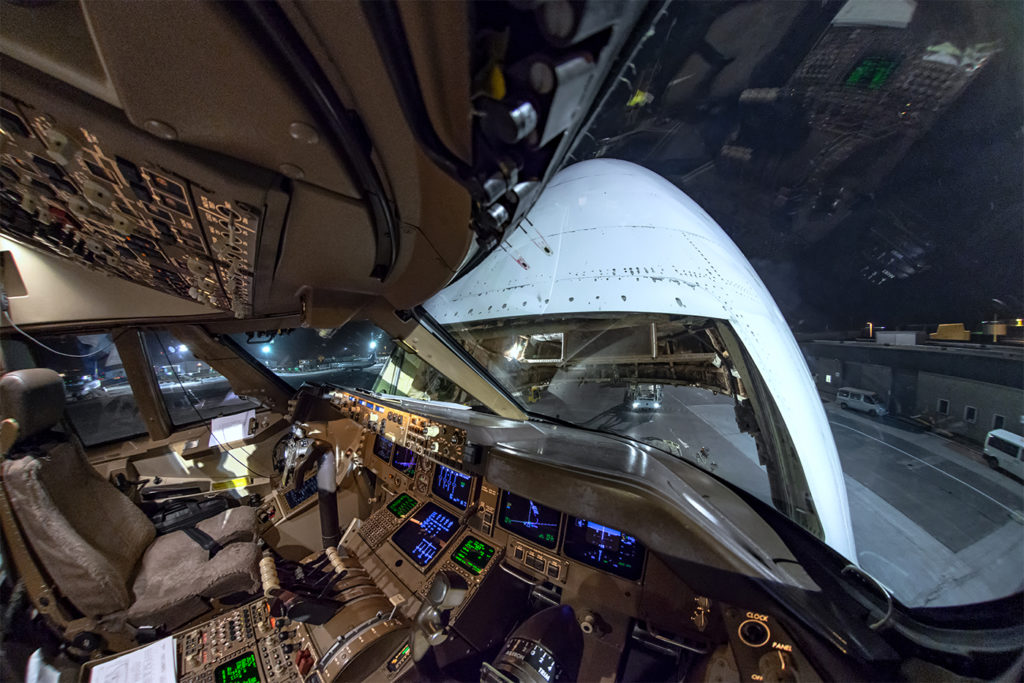
The situation in the temporary hotel outside of the city is not much different: a lone receptionist is sitting behind a sheet of Plexiglas, pointing to my room key on the counter. He wants as little interaction with our species as possible.
Four days of total confinement in my room will follow. A breakfast box with something that resembles scrambled eggs and bacon delivered in front of my door in the morning; online delivery services providing some way of getting food in the evening. For the rest, I’ll be locked up in my room with a couple of good books until I’ll follow the reverse procedure and spin the engines of my 747 into life once again. From isolation in a hotel room to solitude in empty skies and back into hotel isolation at the next destination, until my off days at home in the Netherlands where I have to live in relative quarantine from my family as well. At least I’ll be sleeping in my own bed again.
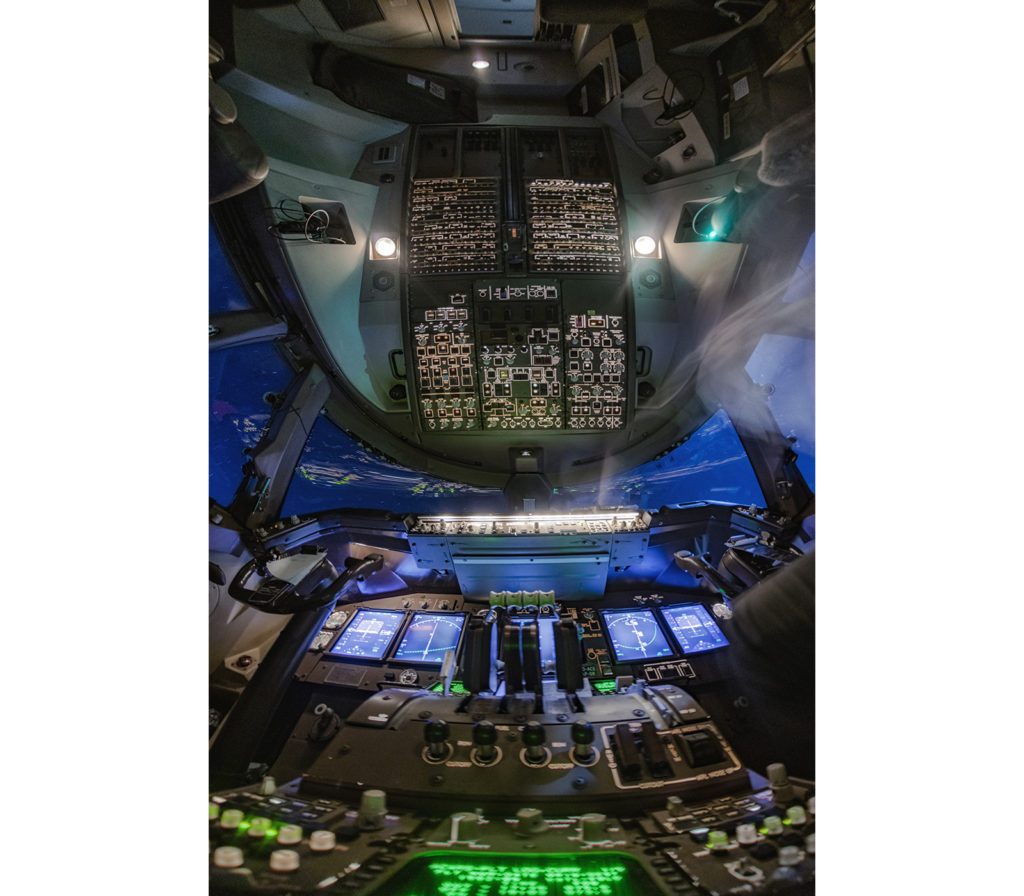
A changed world
All in all, it feels like I’m operating on a front line where we’re fighting an invisible and unfamiliar enemy. Drastic safety measures are seen everywhere and influence pretty much every aspect of our lives. Commuting, flying, security and immigration, and hotel quarantine. But also in my private life, being unable to attend birthdays for family or friends.
At every destination, I notice a sense of community has developed between many of us working in this industry. Whenever I speak with loadmasters, mechanics, other pilots, and ground personnel during our turnarounds, we keep a fair distance but do try to socialize just a little bit if time allows. How are their families doing? How are they holding up since last time we met?

After months of flying in this crisis, I’ve noticed that all of us are dealing with the same questions and uncertainties. How dangerous is this virus for us? For our parents? How long will all of this last and will we still have a job in a month or two? Can the virus be transmitted through touch, surfaces, or the air? So long as we don’t have the definite answers to those questions, everything and everyone is suspicious, it seems.
But sitting at home is simply not an option for those of us working in the air cargo industry: the conveyor belt of the world has to keep on running and my company is considered a vital part of that supply chain. While many of my friends flying for regular airlines are furloughed or anxiously waiting at home now, I’m flying more than ever with full loads of cargo every flight.
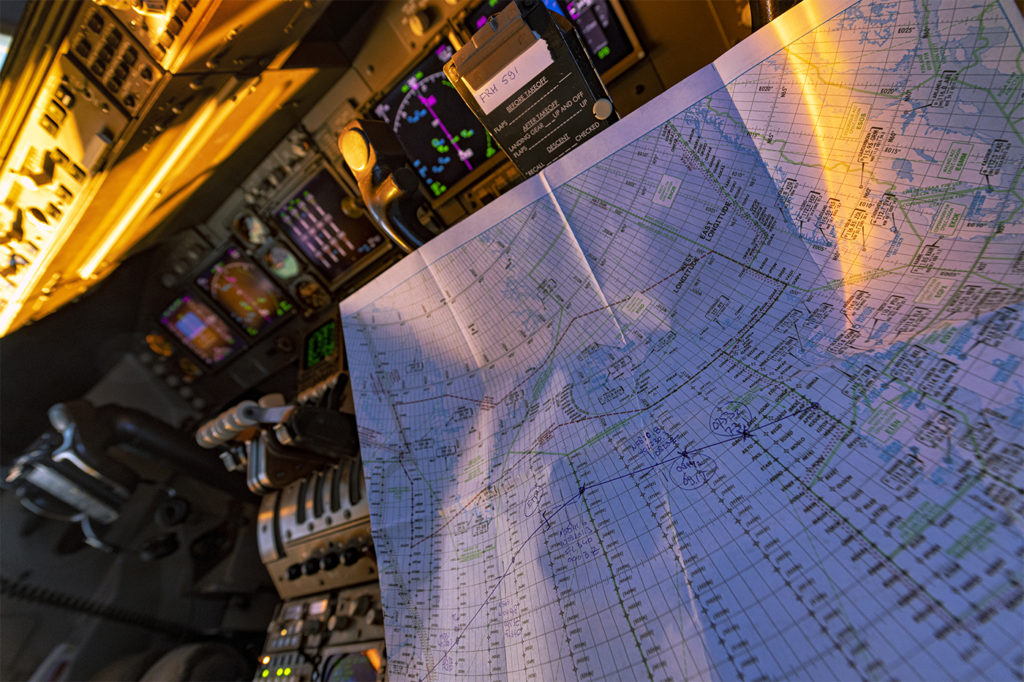
For the first time, the air cargo market is not the first one to take the biggest hit during a global and economic crisis. COVID-19 struck hard and fast, practically grounding all passenger airplanes within a fortnight and paralyzing aviation around the world in an unprecedented way — knocking out most of civil aviation except for the air freight industry.
With the absence of the belly-freight capacity that large passenger planes normally carry, the demand for full freighters has risen tremendously. This largely invisible part of aviation, often considered “unglamorous,” is suddenly regarded as a vital and sometimes last lifeline for cities and nations. Carrying fresh food, medical supplies and all sorts of other goods to keep the economies and hospitals running, cargo planes are flying around the clock.
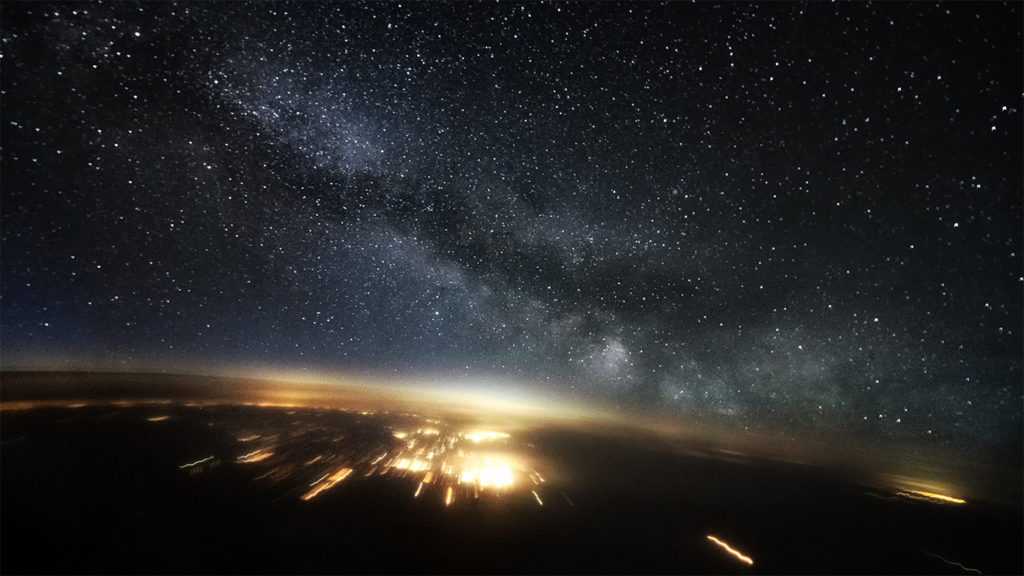
Another chapter?
If there is one word that defines the current crisis for me, it is “isolation.” Isolation from other human beings through Plexiglas, gloves and limited social interactions. Isolation from my family at home while flying for weeks on end. Empty airspaces that make me feel like the only human being up there. No interaction with anyone at destinations or hotels, empty streets and imprisonment in hotel rooms.
At the same time, strange as it may sound, I noticed that flying cargo in this crisis has given me a new and sincere sense of job satisfaction as well. Delivering medical supplies and food is not only important for those on the receiving end, it fills me with pride and gratification to be a small cog in this important process.

We’re all in it together and we’re acutely making a difference with every flight we operate.
On top of that, I feel more privileged than ever to fly the Boeing 747, a proud and dependable machine that seemed to be at the end of her life just a few months ago with rapid retirement from service all over the world. It was a sad goodbye to one of the most iconic machines ever built.

Until COVID-19. Suddenly, the Boeing 747 “Jumbo” is once more offering an essential capacity that few other machines are able to provide, distinctly making up a majority of air traffic again over the last few months. Retired machines are even being brought back to flying status or converted to carry freight.
Maybe this will be a new chapter in the life of the 747 instead of the last, proving her worth beyond a doubt in the indispensable world of air cargo. I can’t wait to get flying again, adding my part to keeping the world turning with my 747.

The Queen of Empty Skies.
Editor’s note: This story appears in the Skies special issue Aviation in the Face of Covid-19. Access the full issue here.
Christiaan van Heijst is a Boeing 747 cargo pilot and one of the world’s leading aviation photographers. Carrying his camera gear with him during his travels around the globe, he specializes in capturing unique views from the stratosphere. His recognitions include Special Photographer of the Year in the 2019 International Photography Awards. More of his work can be found at www.jpcvanheijst.com and on Instagram @jpcvanheijst.
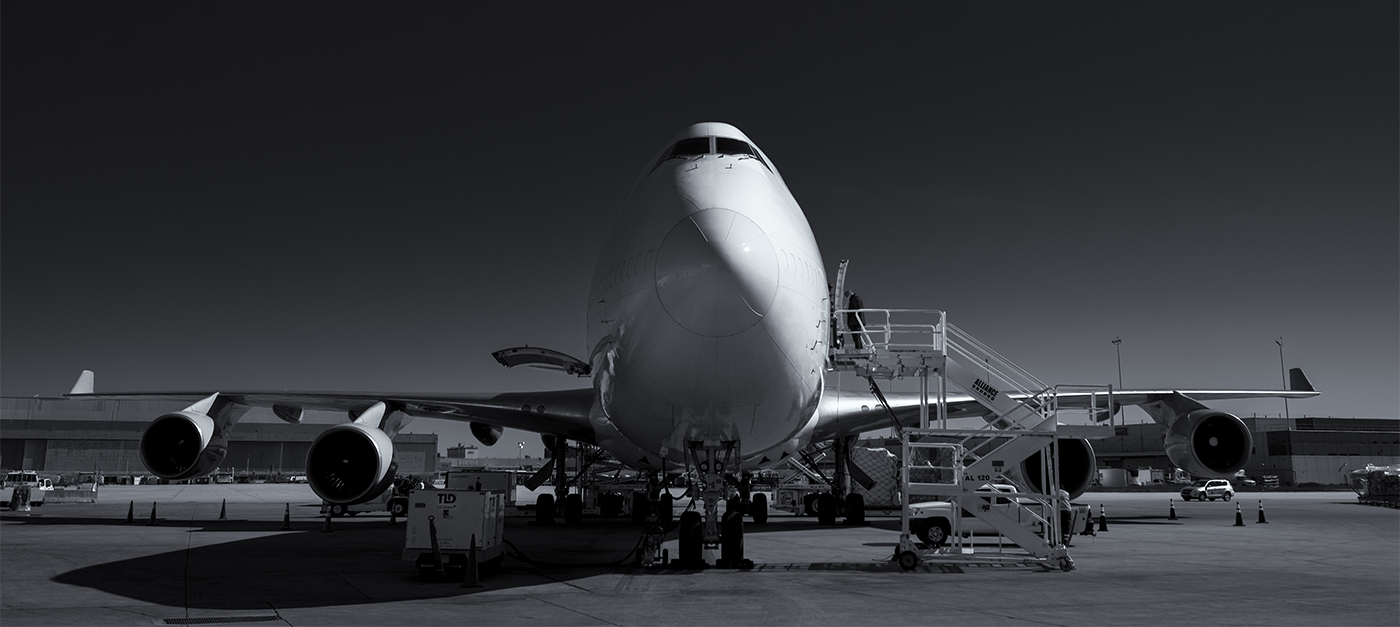

Very well written. Thank you.
I wish 747 would remain as a passenger jet. Great plane. My first ride on one was Alitalia’s 1 Dema out of Kennedy to Rome.
The B747 is a majestic machine and I flew on it in the bubble, in the nose in the business section. I am always impressed with this plane, it is so beautiful and I am in awe when I see it landing or on takeoff. The article is very interesting to read and almost feel what you feel when flying it. While I am distributing my thoughts, I might as well tell you that back in the sixties while I was serving with NATO in France, I had the pleasure to visit The Netherlands a few times, I have always enjoyed your country and its people. Thank you. Wil
Misty eyed after reading that sweet bit of aero-prose. Having lost an old she-cat just when this crisis began, my sadness for her was easily shifted to the sky-queen, who also almost faded away, but was reprieved! Good for her!
I remember when Air Canada got its very first Jumbo. I was 10, and my dad, Greg Lewis, crew-chief grease monkey, took me out to have a look from from the ramp at YYZ. I simply couldn’t believe my eyes; it looked like an ocean liner! I can still see it – every detail. This was only a short time after the changeover from TCA to Air Canada.
Truly marvellous machines, all the 747 variants.
Worked on the 747 flight test program in Seattle 69 and 70. Had 5 planes to test for certification. What a plane , impressive even when I left. Flew with it t o New Mexico for landing and brake testing. We were the back plane. Two of the planes had a fire pole from the cockpit to the cargo area for escape if needed.
You really get a feel for how much this Captain loves this plane and he makes you live it too.
The Boeing 747 is a beautiful aircraft from the original 747-100 to the 8i series I have read that the 8i is the fastest passenger plane in the skies today
Flew on Wardair 747 in 1979 to Barbados name of plane was the Phil Garrett excellent airline in those days every thing was first class excellent experience there and back to YYZ Beautiful Aircraft